
Marlon Brando Jr. was an American actor and activist. Widely considered one of the greatest and most influential actors of all time, he received numerous accolades throughout his career, which spanned six decades, including two Academy Awards, two Golden Globe Awards, one Cannes Film Festival Award, and three British Academy Film Awards. Brando is credited with being one of the first actors to bring the Stanislavski system of acting and method acting to mainstream audiences.
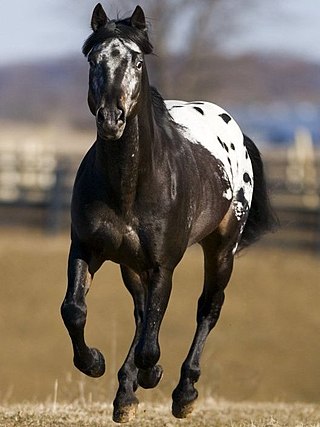
The Appaloosa is an American horse breed best known for its colorful spotted coat pattern. There is a wide range of body types within the breed, stemming from the influence of multiple breeds of horses throughout its history. Each horse's color pattern is genetically the result of various spotting patterns overlaid on top of one of several recognized base coat colors. The color pattern of the Appaloosa is of interest to those who study equine coat color genetics, as it and several other physical characteristics are linked to the leopard complex mutation (LP). Appaloosas are prone to develop equine recurrent uveitis and congenital stationary night blindness; the latter has been linked to the leopard complex.

Burton Leon Reynolds Jr. was an American actor, considered a sex symbol and icon of 1970s American popular culture. Reynolds first rose to prominence when he starred in television series such as Gunsmoke (1962–1965), Hawk (1966) and Dan August (1970–1971). Although Reynolds had leading roles in films such as Navajo Joe (1966) and 100 Rifles (1969), his breakthrough role was as Lewis Medlock in Deliverance (1972).

One-Eyed Jacks is a 1961 American Western film directed by and starring Marlon Brando, his only directorial credit. Brando portrays the lead character Rio, and Karl Malden plays his partner, "Dad" Longworth. The supporting cast features Pina Pellicer, Katy Jurado, Ben Johnson and Slim Pickens. In 2018, the film was selected for preservation in the United States National Film Registry by the Library of Congress.

John Saxon was an American actor who worked on more than 200 film and television projects during a span of 60 years. He was known for his work in Westerns and horror films, often playing police officers and detectives.

The Missouri Breaks is a 1976 American Western film starring Marlon Brando and Jack Nicholson. The film was directed by Arthur Penn, with supporting performances by Randy Quaid, Harry Dean Stanton, Frederic Forrest, John McLiam, and Kathleen Lloyd in her film debut. The score was composed by John Williams.

Anjanette Comer is an American actress.
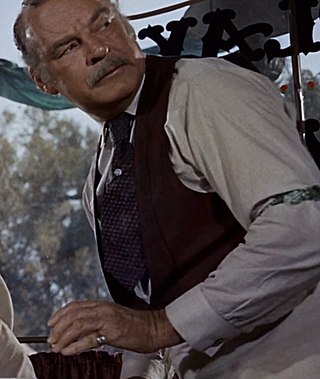
Ray Elgin Teal was an American actor. His most famous role was as Sheriff Roy Coffee on the television series Bonanza (1959–1972), which was only one of dozens of sheriffs on television and in movies that he played during his long and prolific career stretching from 1937 to 1970. He appeared in pictures such as Western Jamboree (1938) with Gene Autry, The Best Years of Our Lives (1946) with Fredric March and Myrna Loy, The Black Arrow (1948), Billy Wilder's Ace in the Hole (1951) and Judgment at Nuremberg (1961) with Spencer Tracy and Burt Lancaster.
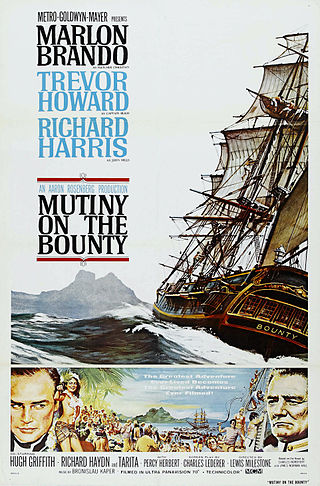
Mutiny on the Bounty is a 1962 American Technicolor epic historical drama film released by Metro-Goldwyn-Mayer, directed by Lewis Milestone and starring Marlon Brando, Trevor Howard, and Richard Harris. The screenplay was written by Charles Lederer, based on the novel Mutiny on the Bounty by Charles Nordhoff and James Norman Hall. Bronisław Kaper composed the score.

Guns for San Sebastian is a 1968 Spaghetti Western film based on the 1962 novel A Wall for San Sebastian, written by Rev. Fr. William Barnaby "Barby" Faherty, S.J. The film is directed by Frenchman Henri Verneuil, and stars Anthony Quinn, Anjanette Comer and Charles Bronson. The score is by Ennio Morricone, who would then use his work in this film as an inspiration for the main theme in The Mercenary. Filming took place in Sierra de Órganos National Park in the town of Sombrerete, Mexico It was made as a co-production between France, Italy, Mexico, and the United States.

Reflections in a Golden Eye is a 1967 American drama film directed by John Huston and based on the 1941 novel of the same name by Carson McCullers. It deals with elements of repressed sexuality, both homosexual and heterosexual, as well as voyeurism and murder. The film stars Marlon Brando and Elizabeth Taylor.
Sidney Joseph Furie is a Canadian film director, screenwriter, and producer best known for his extensive work in both British and American cinema between the 1960s and early 1980s. Like his contemporaries Norman Jewison and Ted Kotcheff, he was one of the earliest Canadian directors to achieve mainstream critical and financial success outside their native country at a time when its film industry was virtually nonexistent. He won a BAFTA Film Award and was nominated for a Palme d'Or for his work on the acclaimed spy thriller The Ipcress File (1965) starring Michael Caine.
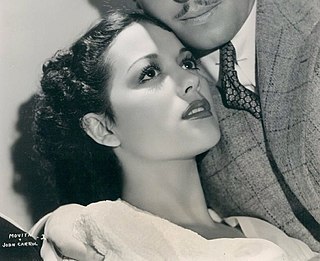
Maria Luisa Castaneda was an American actress and the second wife of actor Marlon Brando. In films, she played exotic women and singers, such as in Flying Down to Rio (1933) and Mutiny on the Bounty (1935). She was the mother of Miko Castaneda Brando and Rebecca Brando Kotlizky.

Guys and Dolls is a 1955 American musical film starring Marlon Brando, Jean Simmons, Frank Sinatra, and Vivian Blaine. The picture was made by Samuel Goldwyn Productions and distributed by Metro-Goldwyn-Mayer (MGM). It was directed by Joseph L. Mankiewicz, who also wrote the screenplay. The film is based on the 1950 Broadway musical by composer and lyricist Frank Loesser, with a book by Jo Swerling and Abe Burrows, which, in turn, was loosely based on "The Idyll of Miss Sarah Brown" (1933) and "Blood Pressure", two short stories by Damon Runyon. Dances were choreographed by Michael Kidd, who had staged the dances for the Broadway production.
The Appaloosa is a horse breed known for its leopard-spotted coat markings and other distinctive physical characteristics.

Rabbit, Run is a 1970 American independent drama film directed by Jack Smight. The film was adapted from John Updike's 1960 novel by screenplay writer Howard B. Kreitsek, who also served as producer. The film starred James Caan as Rabbit Angstrom, Carrie Snodgress as Rabbit's wife Janice, and Anjanette Comer as his girlfriend Ruth. The movie co-starred Jack Albertson as Coach Marty Tothero, Arthur Hill as Rev. Jack Eccles, and Henry Jones and Josephine Hutchinson as Rabbit's parents.
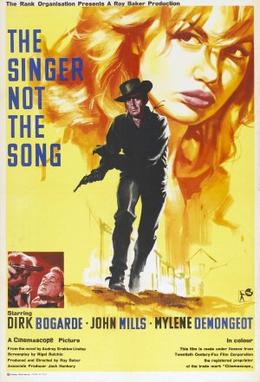
The Singer Not the Song is a 1961 British Western film based on the 1953 novel of the same title by Audrey Erskine Lindop that was directed by Roy Ward Baker and filmed in Spain. It stars Dirk Bogarde, John Mills, and Mylène Demongeot.

Gun the Man Down is a 1956 American western film directed by Andrew V. McLaglen and starring James Arness and Angie Dickinson in her first leading role. The film was produced by Robert E. Morrison for his brother John Wayne's company Batjac Productions. It was the second theatrical feature directed by McLaglen, who was a prolific director of television westerns.

Arizona Bound is a lost 1927 American silent Western film directed by John Waters and starring Gary Cooper, Betty Jewel, and El Brendel.

















